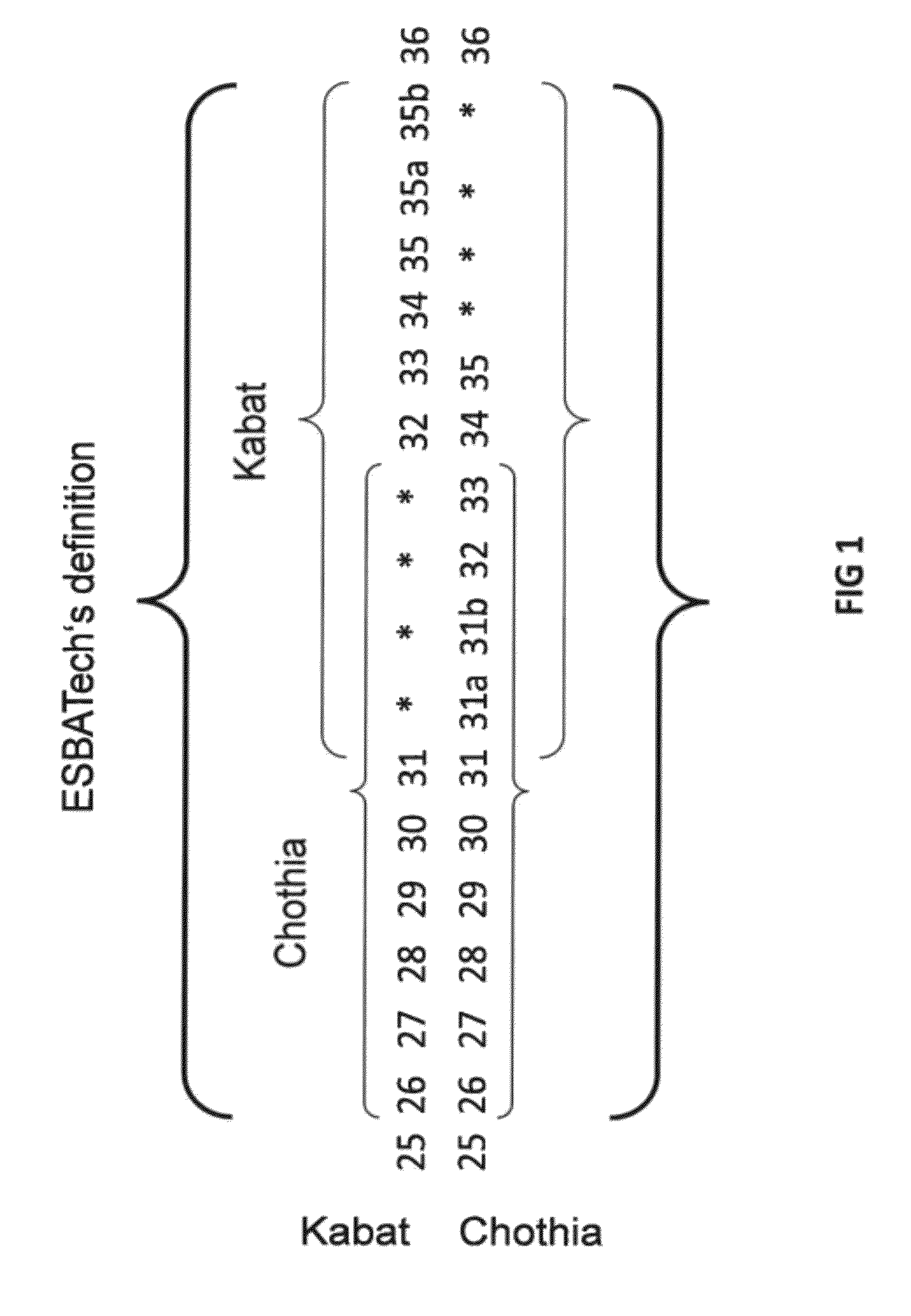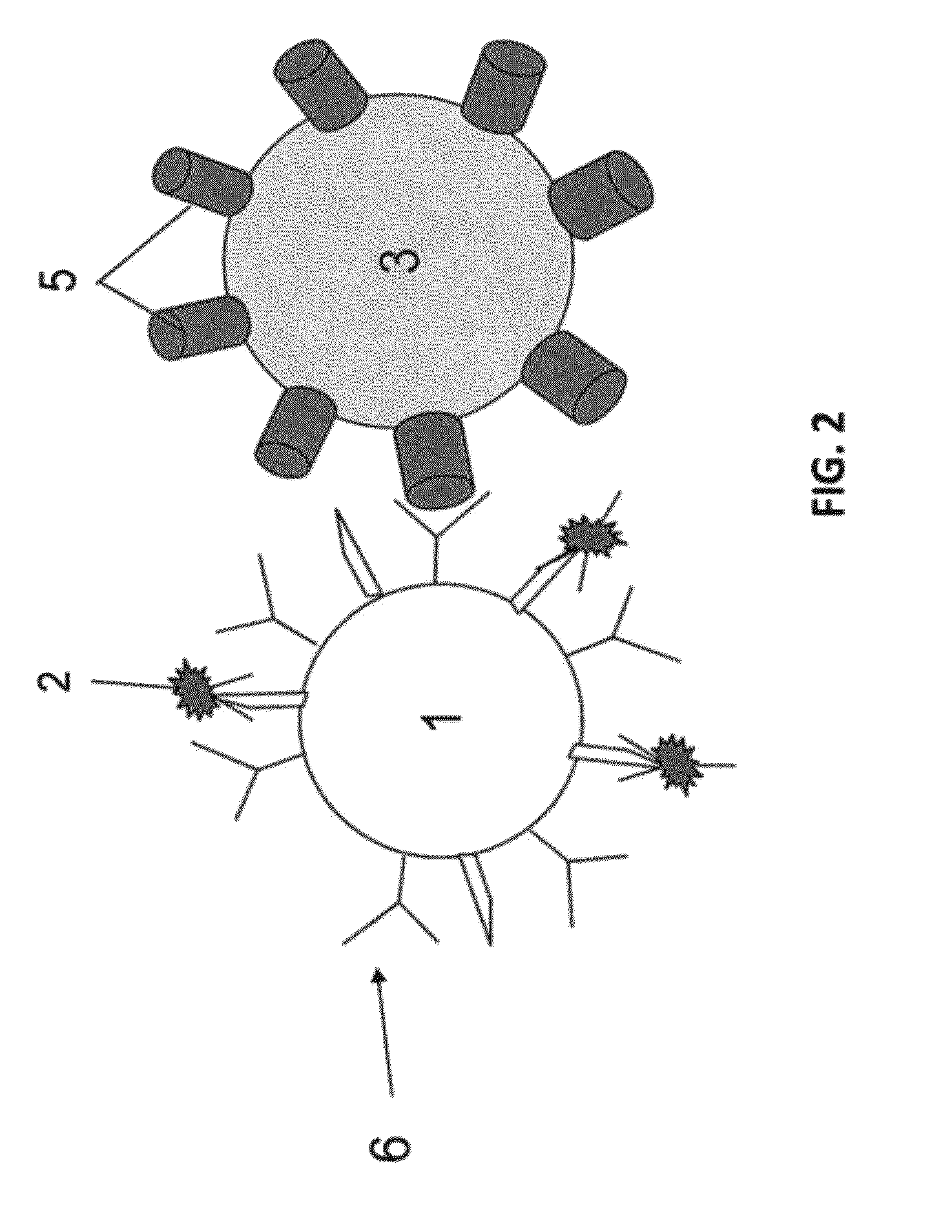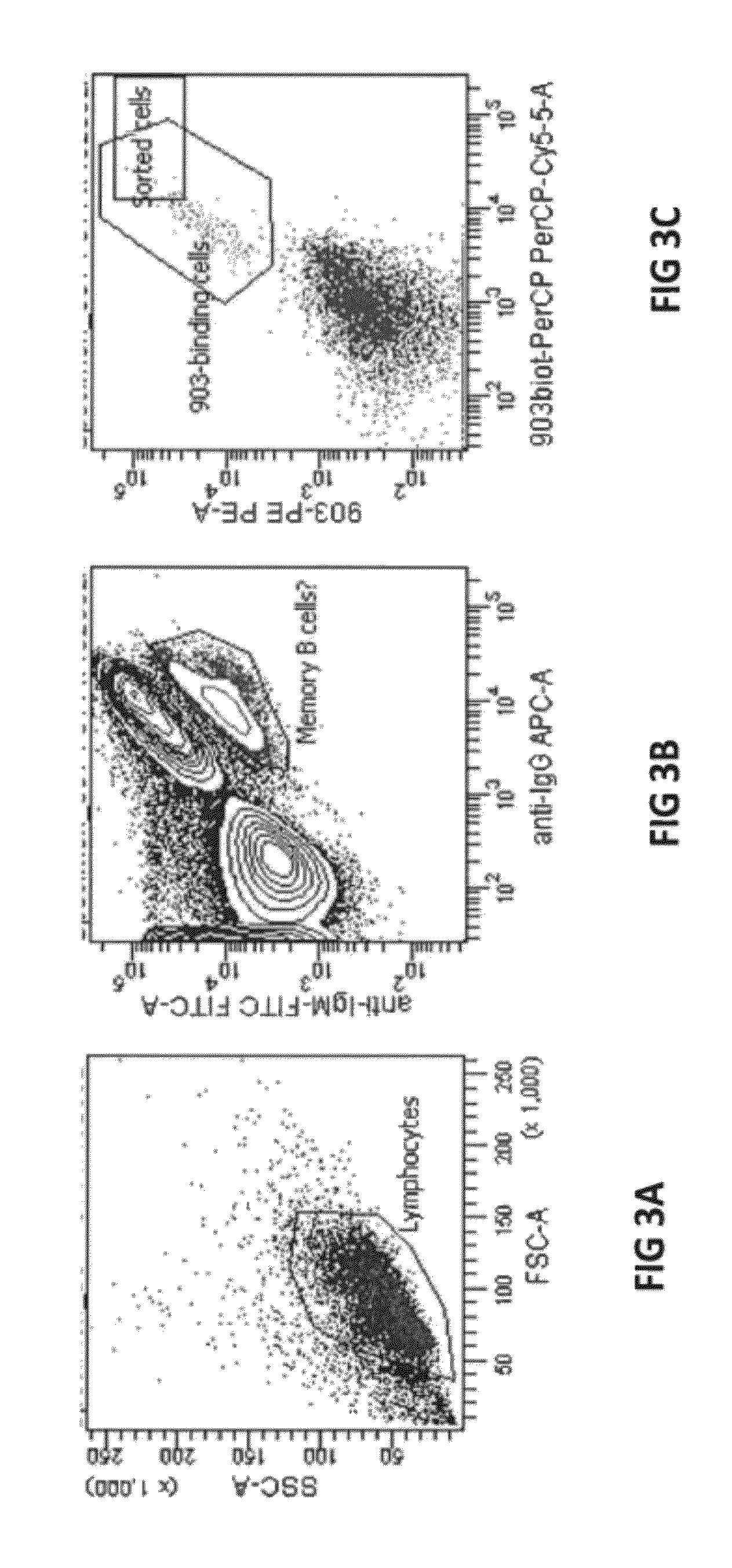Humanization of rabbit antibodies using a universal antibody framework
a universal antibody and rabbit technology, applied in the field of humanization of rabbit antibodies using a universal antibody framework, can solve the problems of not widely spread, good binders, and the inapplicability of conventional hybridoma technology to generate monoclonal antibodies for rabbit antibodies, and achieves superior biophysical properties, good binders, and superior functional properties such as solubility and stability.
- Summary
- Abstract
- Description
- Claims
- Application Information
AI Technical Summary
Benefits of technology
Problems solved by technology
Method used
Image
Examples
example 1
Design of rFW1.4
[0255]1.1. Primary Sequence Analysis and Database Searching
[0256]1.1.1. Collection of Rabbit Immunoglobulin Sequences
[0257]Sequences of variable domains of rabbit mature antibodies and germlines were collected from different open source databases (e.g. Kabat database and IMGT) and entered into a customized database as one letter code amino acid sequences. For the entire analysis we used only the amino acid portion corresponding to the V (variable) region. Sequences in the KDB database less than 70% complete or containing multiple undetermined residues in the framework regions were discarded. Sequences with more than 95% identity to any other sequence within the database were also excluded to avoid random noise in the analysis.
[0258]1.1.2. Alignments and Numbering of Rabbit Sequences
[0259]Rabbit antibody sequences were aligned using conventional sequence alignment tools based on the Needleman-Wunsch algorithm and Blossum matrices. The introduction of gaps and nomencla...
example 2
[0281]A FACS (flow cytometry based single cell sorting)-based screening system has been established at ESBATech in order to select B cells that bind to a target of interest via their B cell receptors (BCR). One target was for example a soluble protein, namely a single-chain antibody (ESBA903) labeled with a fluorescent dye (PE and PerCP). Lymphocyte suspension was prepared from the spleen of rabbits immunized with the recombinant target. Cells were then incubated with PE and PerCP labeled ESBA903 as well as with antibodies specific for IgG (APC-labeled) or IgM (FITC labeled). ESBA903 positive B-cells that express IgG but not IgM on their surface were sorted in 96-well plates (FIG. 3; table 2). By means of a thymoma helper cell line (EL4-B5: see Zubler et al, 1985, J. Immunol, 134(6): 3662-3668), selected B cells proliferated, differentiated into plasma cells and secreted antibodies. The affinity of these IgGs for the target was verified by ELISA and Biacore me...
example 3
Detection of the Interaction Between Beads Coated with Anti-TNFalpha Antibody and CHO Cells Expressing Membrane-bound TNFalpha
[0284]In order to evaluate whether or not the high pressure in flow-cytometry stream breaks non covalent binding between two cells, the following experiment was performed. CHO cells stably transfected with membrane-bound TNFalpha (B-220 cells) were incubated with beads coated with a PE-labeled anti-TNFalpha antibody. In this set-up the beads mimic memory B cells (they have more or less the same size). As negative controls, non-transfected CHO cells were used, as well as beads coated with an APC labeled unrelated antibody (anti-CD19). After 2 hours incubation at 4° C. with agitation, the cell-bead suspension was analyzed by FACS (using a 130 um nozzle). FIG. 4 shows that a specific binding between anti-TNFalpha, beads and TNFalpha-transfected CHO cells is clearly detectable with FACS. Indeed, in this sample (upper panel) about two thirds of the beads are bound...
PUM
| Property | Measurement | Unit |
|---|---|---|
| dissociation equilibrium constant | aaaaa | aaaaa |
| dissociation equilibrium constant | aaaaa | aaaaa |
| dissociation equilibrium constant | aaaaa | aaaaa |
Abstract
Description
Claims
Application Information
 Login to View More
Login to View More - R&D
- Intellectual Property
- Life Sciences
- Materials
- Tech Scout
- Unparalleled Data Quality
- Higher Quality Content
- 60% Fewer Hallucinations
Browse by: Latest US Patents, China's latest patents, Technical Efficacy Thesaurus, Application Domain, Technology Topic, Popular Technical Reports.
© 2025 PatSnap. All rights reserved.Legal|Privacy policy|Modern Slavery Act Transparency Statement|Sitemap|About US| Contact US: help@patsnap.com



